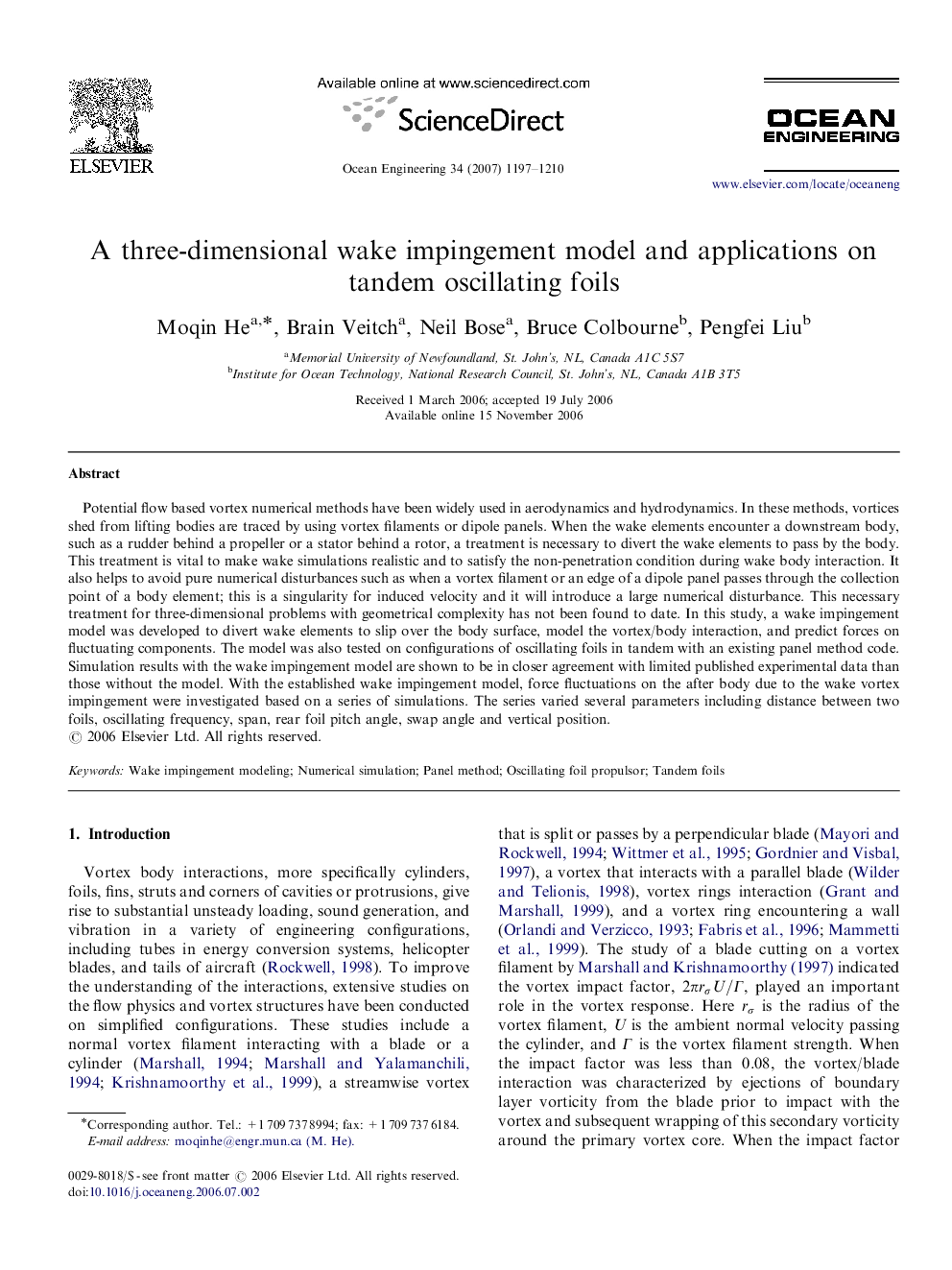| Article ID | Journal | Published Year | Pages | File Type |
|---|---|---|---|---|
| 1727550 | Ocean Engineering | 2007 | 14 Pages |
Potential flow based vortex numerical methods have been widely used in aerodynamics and hydrodynamics. In these methods, vortices shed from lifting bodies are traced by using vortex filaments or dipole panels. When the wake elements encounter a downstream body, such as a rudder behind a propeller or a stator behind a rotor, a treatment is necessary to divert the wake elements to pass by the body. This treatment is vital to make wake simulations realistic and to satisfy the non-penetration condition during wake body interaction. It also helps to avoid pure numerical disturbances such as when a vortex filament or an edge of a dipole panel passes through the collection point of a body element; this is a singularity for induced velocity and it will introduce a large numerical disturbance. This necessary treatment for three-dimensional problems with geometrical complexity has not been found to date. In this study, a wake impingement model was developed to divert wake elements to slip over the body surface, model the vortex/body interaction, and predict forces on fluctuating components. The model was also tested on configurations of oscillating foils in tandem with an existing panel method code. Simulation results with the wake impingement model are shown to be in closer agreement with limited published experimental data than those without the model. With the established wake impingement model, force fluctuations on the after body due to the wake vortex impingement were investigated based on a series of simulations. The series varied several parameters including distance between two foils, oscillating frequency, span, rear foil pitch angle, swap angle and vertical position.
